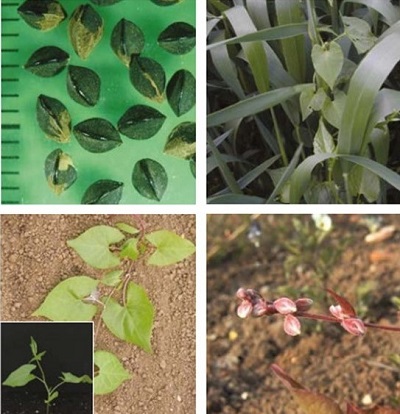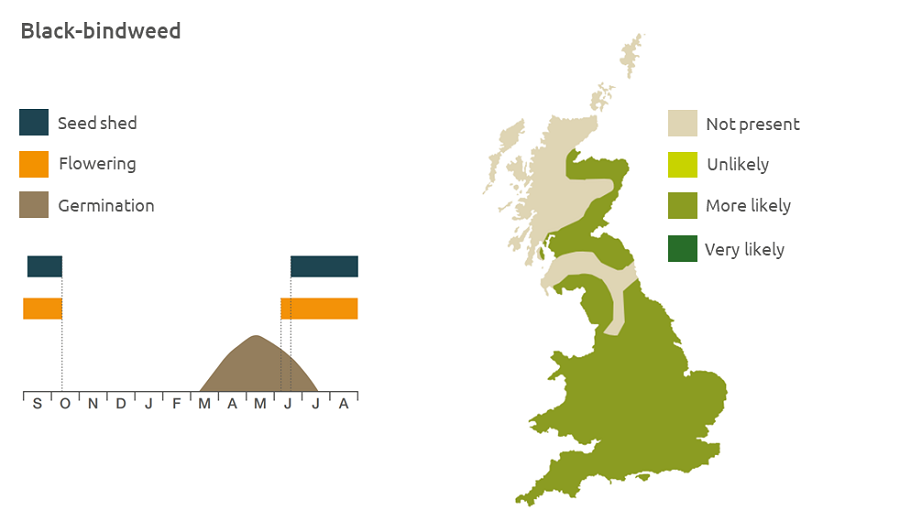- Home
- Knowledge library
- Distribution and biology of black-bindweed in the UK
Distribution and biology of black-bindweed in the UK
Black-bindweed is one of the most common broad-leaved weeds of cereals. Find out how to identify and control it.
Overview
Black-bindweed (Fallopia convolvulus) is one of the most common weeds of cereals; it occurs particularly in spring cereals and in open crops of winter wheat. It is also found in potato, beet and maize crops. It grows rapidly from large seedlings mainly germinating in spring and is deep rooting. Seeds are mainly dispersed with cereal grains. Seeds also survive ingestion by birds. Plants germinating in autumn do not survive winter.
- It is particularly competitive in spring crops
- It has value to biodiversity
Description
It is a summer annual that scrambles as high as the supporting vegetation will allow. The flowers grow on loose flowering spikes.
Key features
Seedling: The hypocotyl is crimson and the cotyledons and first leaves reddish.
Plant: Although the leaves are heart-shaped and resemble field bindweed, the lower lobes of black-bindweed leaves are more rounded than those of field bindweed.
Lookalikes
Young plants of black-bindweed can be confused with those of field bindweed.
The difference is in the cotyledons; black-bindweed has long cotyledons with short stalks, while field bindweed has oval cotyledons, notched at the tip.

Location and life cycle

Geographic distribution
Black-bindweed is mainly found in lowland areas but can grow up to an altitude of 400 m, in arable, especially cereal crops, disturbed land, other bare ground and road sides.
Soil type
It grows on fertile, moist soils with pH >5.
Seed statistics
- Seed longevity: >5 years
- Seed weight: 5 mg
- Seeds/plant: 100–1,000
Management
For advice on herbicides, please speak with your agronomist or adviser.
When was this information last updated?
This page is based on content from the encyclopaedia of arable weeds publication. Since it was first released in 2008, the publication has been redesigned several times but not revised. However, it remains a good foundation for general information on the distribution and biology of weeds.

